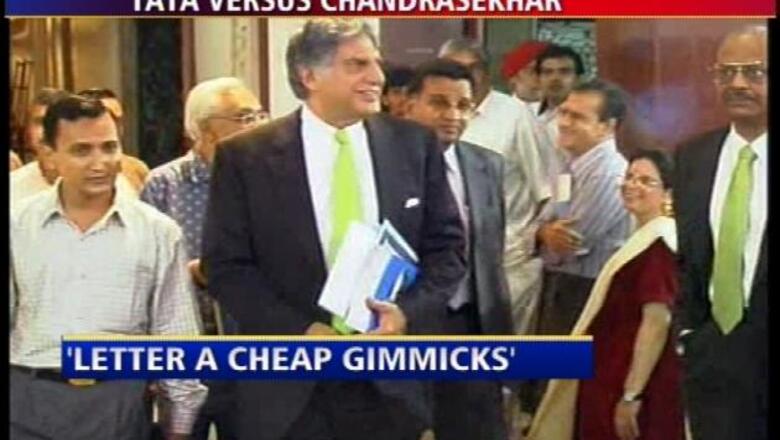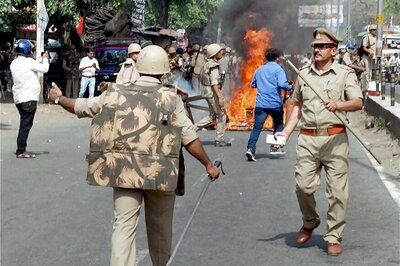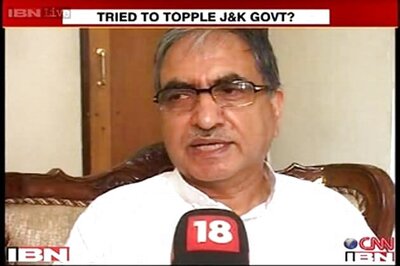
views
New Delhi: Tata Teleservices on Friday responded to Rajya Sabha MP Rajeev Chandrasekhar's second letter accusing the Tata Group of obtaining telecom licenses at lower price.
Tata Tele accused Chandrasekhar of resorting to cheap gimmicks and claimed that the group has followed the set norms.
Following is the full text of Tata Teleservices' Press Release:
17 December 2010
PRESS NOTE
The December 16 press statement by Mr Rajeev Chandrasekhar, Member of Parliament, suggests that he has not read Tata Teleservices’ detailed point-wise rebuttal of 9 December 2010, because he repeats the same falsehoods in it that he had made in his original letter of 6 December 2010.
We take this opportunity to repeat the salient points of our responses to his three specific allegations.
Mr Chandrasekhar asks (again):
a)“Policy flip-flop—Inventing Limited Mobility and Moving to UASL: How did the Tata companies get UASL (including cellular) licenses (with spectrum) in new Circles without going through the auction process? And the role of Mr Pradeep Baijal, who was then Telecom Regulator and, subsequently, upon retirement, consults for Tata Group…”
We repeat our clarification:
Tata Teleservices Limited got its UASL in line with the then policy of the Government of India for all operators, namely after paying a fee equivalent to that paid by the 4th cellular licensee. In fact, 48 new GSM licenses were issued between 2004 and 2008 (which included Bharti [6], Vodafone [9], Idea [11], Reliance [1] and Aircel [21]), apart from a further 113 licences in 2008 on the same norms—of fees equivalent to that paid by the 4th cellular license.
Mr Chandrasekhar’s mischievous mention of Mr Pradeep Baijal is new. He should know the limited powers of the office which Mr Baijal occupied, that of the head of TRAI. The role of TRAI is to make recommendations under Section 11 of TRAI Act 1997, and it is entirely up to the DoT, which is the final decision-maker, to accept the recommendations or not to accept them. Besides, Mr Baijal’s recommendation in favor of UASL was a generic recommendation in favor of a technology agnostic telecom policy and not something specific to Tata Teleservices. Also, several operators got UASL then and not just Tata Teleservices.
Mr Chandrasekhar asks (again):
b) “Out-of-turn Allocation of Spectrum: What was the need/rationale of the dual-technology policy—other than ensuring that companies like Tata Teleservices received 2G spectrum in 2008 at 2001 prices, over 373 applications which were already waiting in the queue for over three weeks? The link of the lobbyist to the perpetrators of dual-technology is already in the public domain.”
We repeat our clarification:
The dual-technology policy was announced by the D0T in a press release on 19 October 2007. In it, DoT quoted the TRAI recommendations of 28 August 2007, which explained that a dual-technology policy would be consistent with the rationale behind the UASL technology-agnostic policy. TRAI’s recommendations were submitted after holding an Open House on 18 July 2007, and after receiving written comments from the public, which were displayed on TRAI website.
Subsequently, the Hon’ble TDSAT and the Delhi High Court have also upheld the dual-technology policy. In fact, TDSAT stated that since this was allowed in the case of MTNL in September 1999, by amending its UAS licence and making it technology-neutral, there was even no need for TRAI to hold any consultation.
Mr Chandrasekhar asks (again):
c) “Spectrum Hoarding: Which companies have really hoarded the Spectrum, gotten both CDMA and GSM spectrum at 2001 prices, the cheapest, served least number of subscribers and paid least revenue to government per MHz of spectrum? And whether this flows from the UASL and dual-technology regimes?”
We repeat our clarification:
The November CAG Report and TRAI recommendations of May 2010 have pointed out that operators holding GSM spectrum beyond the contracted amount of 6.2 MHz should pay for excess spectrum. We have repeatedly clarified that Tata Teleservices is still waiting for GSM spectrum in 10 circles and is waiting for approval to offer dual-technology services in three Circles.
Tata Teleservices reiterates that it has never obtained any benefits or concessions or licences—out-of-turn or illegally, or at rates lower than what others have paid or different than what was as per prevalent rules. On the contrary, it has always been put behind in the queue, which is also evident from the fact that even three years after having paid the license fee of Rs 1,651 crore, Tata Teleservices has not received 2G GSM spectrum in Delhi, as also in 39 crucial districts of nine other circles. The CAG Report also specifically mentions this injustice to TTSL.
Tata Teleservices has also clarified repeatedly that it applied for dual-technology only after the policy was announced and paid the fees as was paid by others, and as per the law of the land.
Tata Teleservices also finds the statement linking a former regulator whose powers were only to make non-binding recommendations, insinuating that he granted huge benefits to Tata Tele—this is nothing but a cheap gimmick. The real beneficiaries of DoT’s inconsistent and arbitrary policies were incumbent GSM operators who were issued 48 GSM licenses and allocated 65 MHz of additional spectrum free of charge, beyond the contracted spectrum, between 2004 and 2008.
Considering that the Hon’ble Supreme Court has already directed an investigation into the matter of 2G spectrum allocation, we do not see any merit in keeping this issue alive any further. We would, therefore, not be responding to any further statements from Mr Rajeev Chandrasekhar, as we find the debate created by him to be futile.

















Comments
0 comment